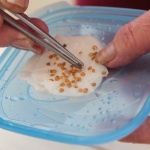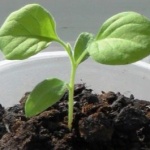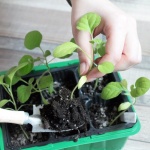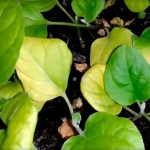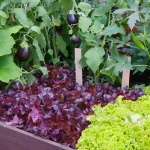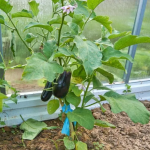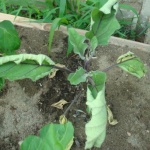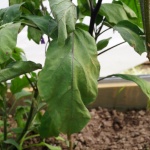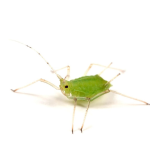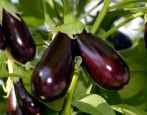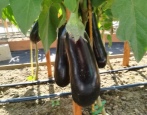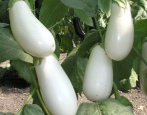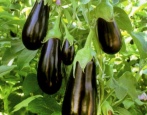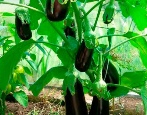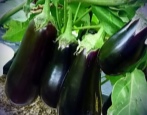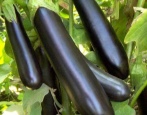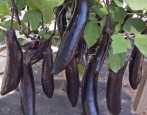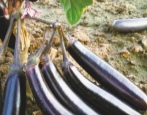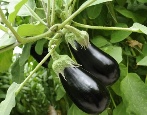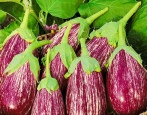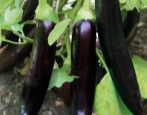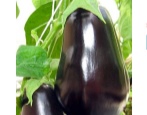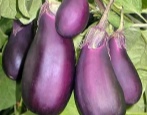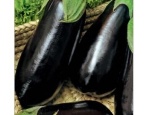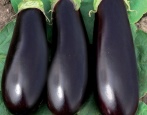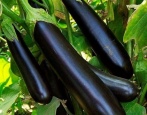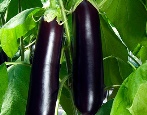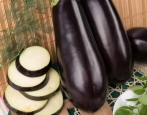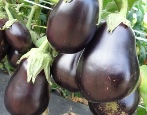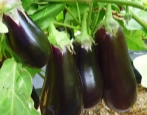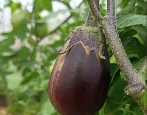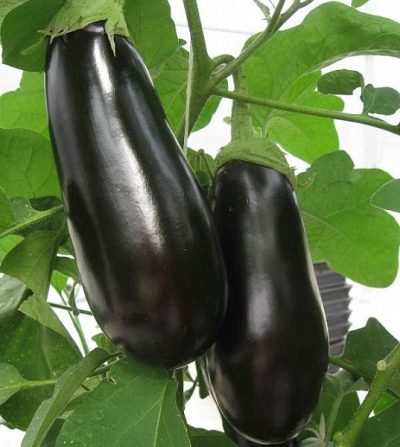
- Authors: Gavrish S.F., Kondakova O.A., Dymnich O.V.
- Year of approval: 1998
- Growth type: vigorous
- Bush height, cm: 70-150 in film greenhouses, up to 250 cm in glazed greenhouses
- Fruit shape: pear-shaped
- Fruit weight, g: 250-350
- Yield: high yielding
- Marketability: 99%
- Ripening terms: mid-season
- Pulp (consistency): medium density
To get maximum yields when growing eggplant, you need to choose the right variety that will be adapted to certain climatic conditions. An excellent choice for growing in greenhouses will be a hybrid variety of Hippopotamus, domestic selection.
Breeding history
The hippopotamus is a hybrid of the first generation, created in 1996 by the scientists of the Gavrish breeding company. Authorship belongs to O. A. Kondakova, O. V. Dymnich and S. F. Gavrish.
The vegetable crop was introduced into the State Register of Breeding Achievements of the Russian Federation two years later (in 1998). The vegetable is cultivated in protected ground - all kinds of greenhouse structures, hotbeds, film shelters. The hybrid is zoned for the Northern and Central regions.
Description of the variety
Hippopotamus is a tall standard plant, which in film greenhouses stretches up to 70-150 cm, in glazed structures - up to 250 cm.The bush is characterized by medium foliage with green foliage, low prickly stems, strong spreading of branches, a powerful central trunk and a strong root system.
During the flowering period, pale purple five-petal flowers appear on the bushes. On one bush, up to 8 identical fruits ripen, drooping.
Characteristics of the appearance of plants and fruits
Large-fruited hybrid. Aligned fruits with attractive commodity data ripen on the bushes. The average weight of a vegetable ranges from 250-350 grams. The length of the fruit is up to 14-18 cm. The shape of eggplants is pear-shaped with a rounded apex. At the stage of technical maturity, the vegetable has a pale burgundy color, and an absolutely ripe fruit is evenly covered with a dark purple cover. The surface of the vegetable is smooth, glossy, without any irregularities and bumps. The rind is firm but not firm. The eggplant has a rounded cup, practically without thorns.
The harvested vegetables can be transported over long distances, as well as stored for some time in a cool and dry place - in the refrigerator or basement.
Purpose and taste
The hippopotamus is famous for its excellent taste. The yellowish-white or pale greenish flesh of the vegetable is moderately dense, fleshy, not watery and without fiber. The taste is pronounced, without bitterness and astringency. There are few seeds in the pulp.
The purpose of the hybrid is universal - many dishes are prepared from eggplants, they are pickled, canned, baked, frozen.
Ripening terms
The hybrid belongs to mid-season vegetable crops. Less than 4 months pass from the mass appearance of sprouts to the first ripe fruits on the bushes - 100-110 days. Fruit ripening is amicable. The harvest period is in July, but can last until August. Eggplant is removed every 5-7 days.
Yield
The hippopotamus is a high-yielding species. With proper agricultural technology, one bush can produce up to 2.5 kg of delicious vegetables. On average, from 1 m2 - 12-17.5 kg of fruits. The maximum figure is fixed at around 6 kg from 1 bush.
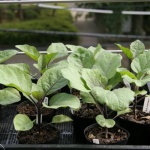
To get a tasty and bountiful eggplant crop, you must first grow strong and healthy seedlings. This culture is considered very capricious, therefore, you need to take care of seedlings when growing at home as correctly and carefully as possible.
Landing scheme
When planning the planting of eggplant bushes, you should take into account the density and distance between the plants, since the access of light, heat and air to each bush depends on this. It is recommended to plant no more than 4-5 bushes per 1 m2. Planting should be carried out according to the 40x60 cm scheme.
Growing and care
The hippopotamus is a hybrid, therefore it is cultivated through seedlings. Planting in a greenhouse under a film or in a greenhouse is carried out in the last decade of May. For this, strong bushes with a developed root, a strong stem and 5-8 true leaves are suitable.
The crop yield directly depends on the correctness of the implementation of agrotechnical recommendations - irrigation with warm water, it is advisable to use water with the addition of liquid fertilizers, feeding with organic and mineral complexes 3-4 times per season, weeding and loosening of the soil, the formation of bushes in 2-3 stems, obligatory garter to trellis, pinching the top when the plant reaches 30-35 cm, prevention of viruses and insect infestations. In addition, you shouldn't forget about ventilation in order to control the humidity level.
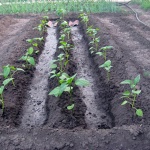
Planting eggplant is one of the most important stages in growing. When choosing a place for eggplants on your site, it is important to remember that this culture should be in warm soil, constantly illuminated by the sun. The plant is also very fond of spacious, open spaces, since its roots can grow over sufficient areas.
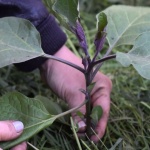
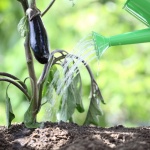
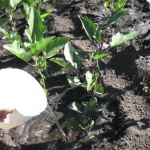
Soil requirements
The vegetable is picky about the nutritional value and structure of the soil. The soil should be light, loose, fertile, with a neutral level of acidity, breathable and moderately moist. Do not plant in heavy and waterlogged soil.
Required climatic conditions
Eggplant hippopotamus is very thermophilic, therefore, susceptible to the slightest drop in temperature. That is why it is quite problematic to plant a culture in open ground. It is recommended to plant the Hippopotamus in a sunny area, where there is a lot of heat and light, and there is also protection from drafts and temperature extremes.
Disease and pest resistance
Due to its high immunity, Behemoth is absolutely resistant to tobacco mosaic virus and verticillosis. Among the diseases that eggplants may be exposed to, it is worth noting powdery mildew, fusarium, gray and white rot. Bushes are attacked by such pests as the Colorado potato beetle and spider mites.

Eggplant is one of the most demanding crops. For its successful cultivation, it is necessary to create optimal conditions, as well as to carry out prevention and fight against diseases and pests. Eggplant often infects both fungal and viral diseases. If treatment is not started on time, you can completely lose the crop.
